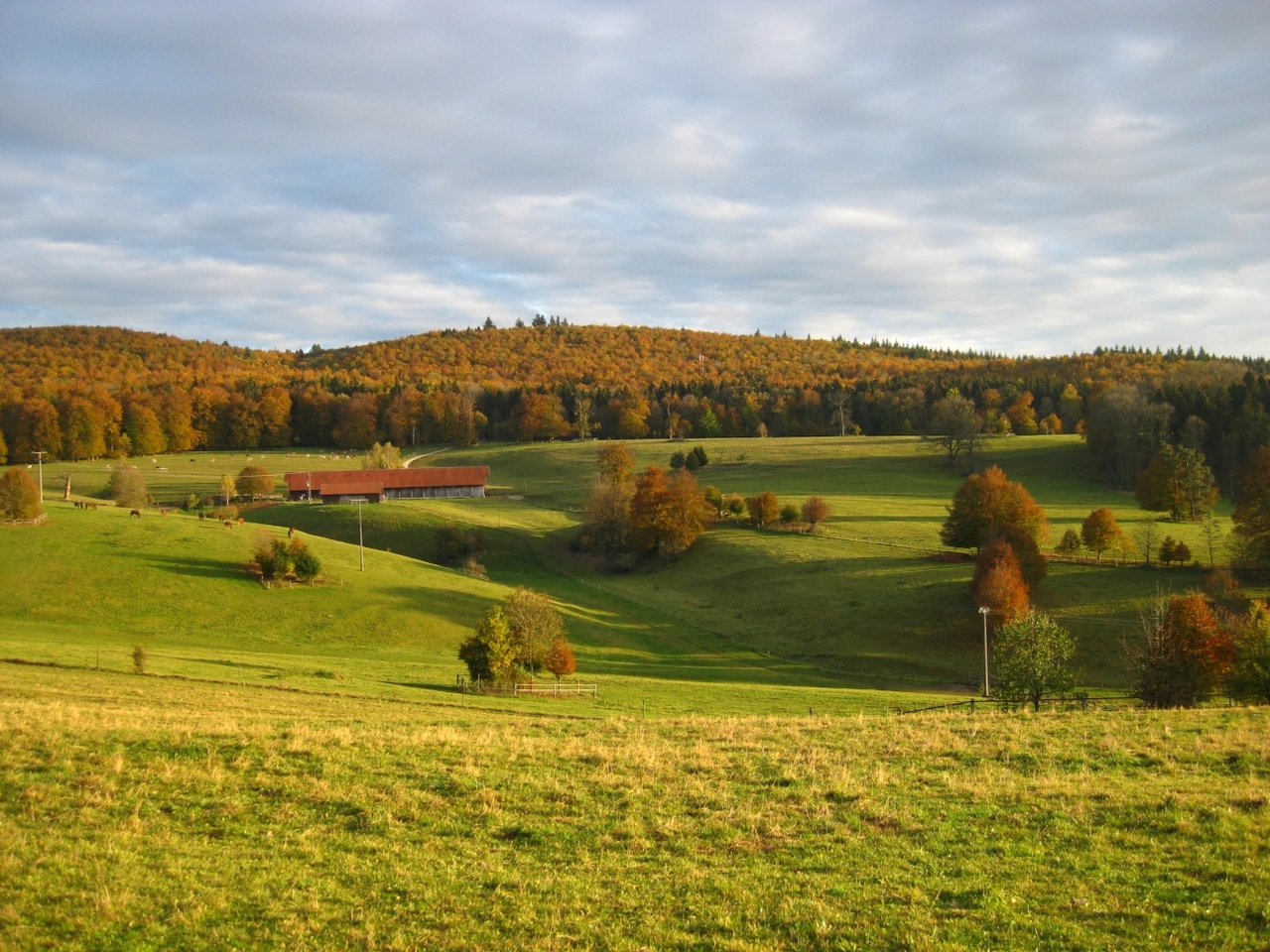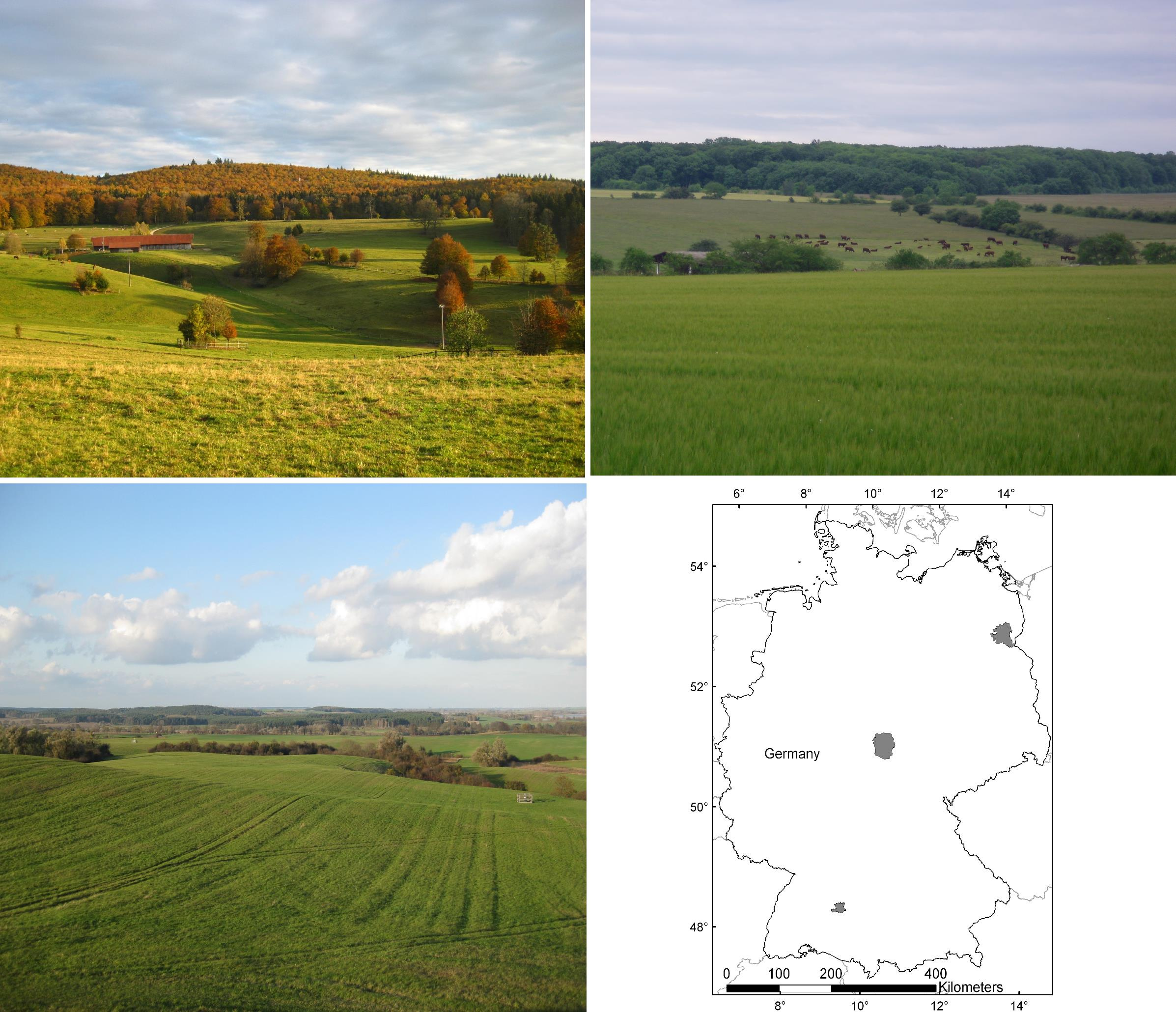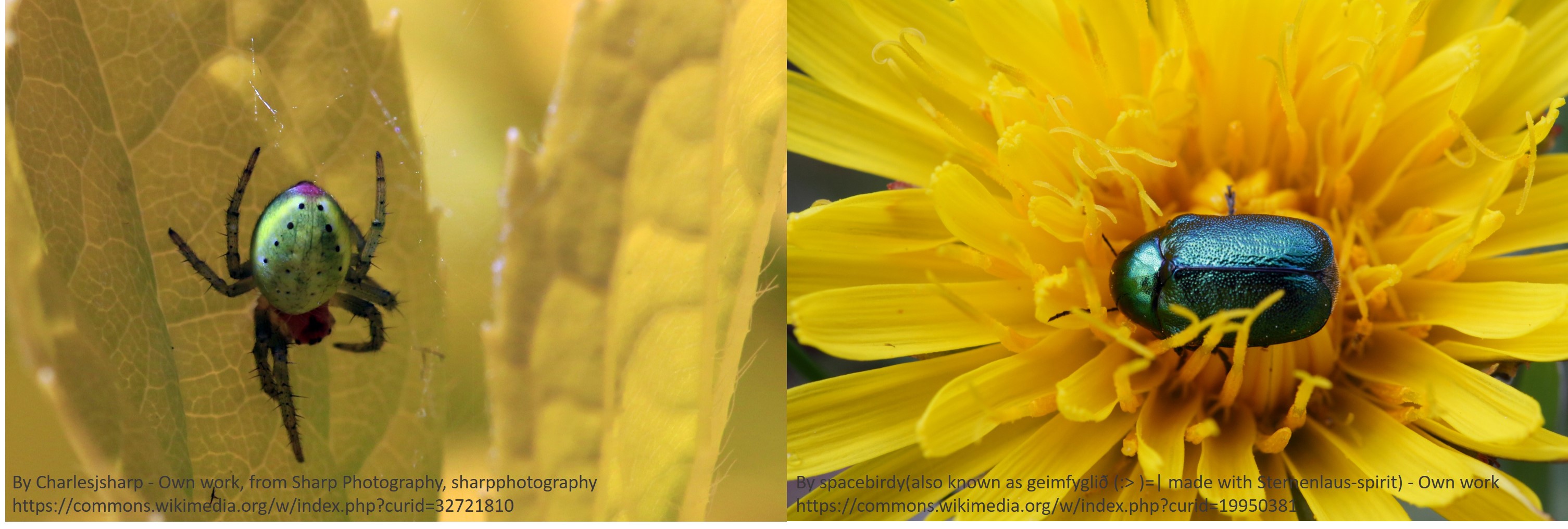Agricultural production and conservation in grasslands
Published in Ecology & Evolution

When I started my PhD in October 2011 at the Terrestrial Ecology Research Group of Prof. Wolfgang Weisser, I was handed a dataset of grassland arthropods which had been collected within the framework of the Biodiversity Exploratories project on 150 managed grasslands in three regions of Germany. The dataset contained yearly samples since 2008 but had not yet been analyzed, leaving me the opportunity to answer a number of basic ecological questions with it. By the middle of 2014, I had looked at how management on the grasslands changed the number of arthropod species, their community composition, the functional trait distribution in the communities and population stability. However, even though we investigated a managed system, we had a hard time generating any solid recommendations for management from our results. This was not very satisfactory. Even though we knew that is was necessary to understand the ecological mechanisms in our system before making any recommendations for management, we felt that it was time to take a more applied perspective.

Grasslands in three study regions (top left: Schwäbische Alb, top right: Hainich-Dün, bottom left: Schorfheide-Chorin) and the study regions’ locations in Germany. -- Picture from Hainich by courtesy of Steffen Both, other pictures by N. Simons.
During a student course on conservation, Wolfgang discussed the 'land sharing vs. land sparing' approach by Green et al. (2005) with his students and had the idea to apply this concept to our study system. The basic idea of Green et al. was that the change in a species’ abundance along a gradient of productivity can be used to predict whether the species will profit (i.e. have a larger overall population size) under 'land sharing vs. land sparing' (i.e. intensification of agriculture to keep large protected areas within one region) or ‘land sharing’ (i.e. low-intensity production in the whole region). Many studies had applied the 'land sharing vs. land sparing' approach in tropical countries, but no study had tried this in the temperate zone, let alone in managed grasslands. We had the same type of data that Green et al. used in their paper and the applied aspect was immediately apparent. So in late 2014, I calculated abundance-curves along the land-use intensity in our studied grasslands. I presented the results in one of our group meetings and during the discussion, several constraints in the original approach became apparent: Could we use land-use intensity as a measure of productivity on our grasslands? What should be the reference habitat in our system (analogous to the 'pristine forest' in the model of Green et al.) to which the managed part of the landscape was compared?

How can we compare the agricultural production of pastures, hay meadows and protected areas? -- all pictures CC0 Public Domain
During the next months, I thought a lot about those questions and tried to find good solutions for them. After several short discussions, Wolfgang and I found time to really talk through the problems on a Sunday afternoon in March 2015, sitting on a hotel balcony near the Stanford campus where we had traveled to for a conference. The more we talked about it and the more we questioned both the original approach as well as my first adaptation of it, the clearer it became that we would have to redefine the concept of 'land sharing vs. land sparing' for our system. Nevertheless, we decided that I would write up a first manuscript version with the results I already had to be able to include it as the final chapter of my PhD thesis. The results showed that more arthropod species would profit from a land sparing approach than a land sharing approach when the original concept was applied on a land-use-intensity gradient. But this version still did not have the applied perspective that we wanted to achieve, because our land-use-intensity gradient is a combined measure of different management approaches and does not say anything about the grasslands' productivity.
It was clear that the manuscript still needed more work in order to include a proper management perspective, but during the next months the manuscript always ended up at the bottom of my to-do list - until I needed to prepare my talk for the Annual meeting of the Ecological Society of Germany, Switzerland and Austria (GfÖ) in August 2015. I wanted to present results from our new approach at the conference, so I went back to notes I had made in March. Luckily, I found two formulas in the agronomic literature to calculate the production of both pastures and hay meadows from plant biomass samples. With this, I could calculate the agricultural production of each grassland and the overall production in each of our three study regions which brought my analysis closer to the original approach by Green et al. and added an applied perspective. As it is tradition in our group, everybody attending a conference gives a test presentation before the conference to obtain feedback. In my case, the feedback was clear: nobody really understood my approach and how this was related to the 'land sharing vs. land sparing' paradigm; furthermore my graphs were too complex for a 12 minute presentation. So I sat down and created new graphs to explain the approach. While this was a lot of work in a short time, it was definitely worth it because I not only did improve the talk but I now also had the basis for some of the figures which are included in the published manuscript. A couple of weeks after the conference, we had a new version with a completely new set of figures and a new story line almost ready for submission.
But then it happened again that other projects were more important and the manuscript laid around unopened for four months. When I finally found time to work on it again, I decided to check if any more recent publications had cited the original Green et al paper. This was in fact the case, six papers had been published since I last had checked and to my dismay, several of them introduced one of the modifications to the original approach that we had done in our analysis and had thought that we would be the first to do. For a few days, it felt as if our really novel and innovative manuscript had now been degraded to a simple case study. However, when we sat together again, we found that even though Kamp et al. (2015) had now applied the approach to grasslands, and even though Butsic & Kuemmerle (2015) had looked at more strategies than just the extremes of 'land sharing vs. land sparing', our study would be the first to apply the concept to only one habitat type and consider management for conservation as the reference state. With this new motivation, we restructured the manuscript again and prepared it for submission. In the meantime, Nature Ecology & Evolution had begun to accept manuscripts and we thought that this could be just the right journal. In September 2016, we finally submitted the manuscript.
When the reviews came back I was really impressed by the reviewers' very constructive revisions which showed that they had put a lot of effort and thought into it. Most comments were easily addressed but two of them were going to change the manuscript substantially. The first one was not more than half a sentence within a longer comment, where the reviewer wondered what the results would look like if we were to truly optimize the distribution of productivity levels, rather than only looking at two different levels at a time. Well, that shouldn't be too hard to implement in R and totally be doable in a couple of days, I thought. I had some experience with optimization algorithms from my master thesis but I had not done this in R before. After looking through my R books, the R bloggers website and StackOverflow, I found a function to implement what I wanted: 1. find the set of productivity levels on the different grasslands which would result in maximal production while at the same time the number of individuals per species should not be lower than observed. 2. find the set of productivity levels which would result in most species reaching a maximum population size while overall production should not be lower than observed.
However, I just could not get it to work properly and my test dataset always returned strange results. At the end of one day when I had been sitting at my desk and tried different things without the results I wanted, I went to see the movie 'Arrival' with a couple of friends. During dinner before the movie, I complained about the fact that I still hadn't solved my optimization problem and one of my friends turned around to ask what exactly my problem was. At first I was surprised but then I remembered that finding optimal solutions for logistical problems in companies was his day-to-day job. So we discussed what I wanted to achieve and where I was currently stuck and by the end of the trailers, he had suggested a solution which actually solved my problem the next day. So almost in the same way as interdisciplinary collaboration saves the day in the movie 'Arrival', an interdisciplinary discussion saved the manuscript.

Left: A green orb spider (Araniella cucurbitina) which profits from medium to high production levels. Right: A green leaf beetle (Cryptocephalus hypochaeridis) which profits from very low production levels. -- both pictures CC BY-SA 3.0.
When the optimization runs were finished we saw even more clearly what the other results had indicated: a diverse mix of productivity levels is a better solution for most species than either 'land sharing' or 'land sparing'. By the time those new results were integrated into the manuscript, I already had to ask for an extension of the re-submission deadline. As the second deadline approached, I only had one reviewer comment left to address which was the one comment I was most reluctant to implement: The reviewer was not at all convinced by the way we related our approach to the classical 'land sharing vs. land sparing' concept. But, from the beginning of our discussions, this had been our main motivation behind the manuscript. The introduction started with a description of how the classical approach was not suitable for our study system and what we had done to improve it. We were convinced that this was the main novelty of our manuscript so we decided to address the reviewer's concern by replacing the 'land sharing vs. land sparing' terms with new names for our strategies but left the structure of the manuscript unchanged.
As one can see in the published version, the reviewer was not convinced by our half-hearted changes and insisted that the manuscript would improve if we got rid of the comparison with 'land sharing vs. sparing' and reframed the manuscript around our findings. Even though I was not convinced and still reluctant to give up on the initial motivation behind the manuscript, I tried what the reviewer suggested: I highlighted all paragraphs and sentences where we mentioned the 'land sharing vs. land sparing' concept, moved our critical discussion of it from the introduction to the discussion, deleted all other instances and even moved Figure 1 to the Supplement. When I read this new version, I was pleasantly surprised that it was not at all just the skeleton of the original but that it had a nice and pleasant structure. Sure, it was now missing some meat and polishing here and there, but it was much nicer to read and did not miss its novel aspects.
When I compare the version which I included in my thesis in 2015 and the published version of 2017, I see two completely different manuscripts. Sure, our initial idea is still the same but the story we are telling is quite different. When I talk with colleagues about all the discussions, revisions and rounds of commenting that our manuscripts are going through, we sometimes have the feeling that we are just going around in circles or back and forth between different personal preferences without really improving. And even though there are definitely times when one has to break out of this circle and accept that a manuscript is good enough the way it is, this manuscript has shown me that accepting new perspectives and radical changes (even and maybe especially from reviewers) can sometimes lead to unexpected improvements. So this is my general take-home message from writing this manuscript: sometimes it is worth taking some time and let a manuscript mature, and taking in uncomfortable feedback from other people. Admittedly, I could have been faster, but I am very happy that the manuscript became the way it is now, more solid and also much more general than it was initially.
You can find the published manuscript here.




Please sign in or register for FREE
If you are a registered user on Research Communities by Springer Nature, please sign in